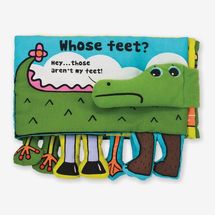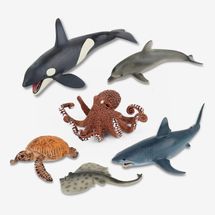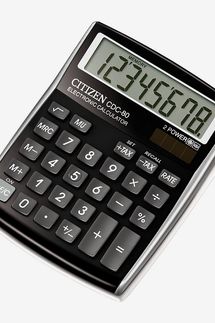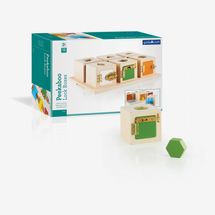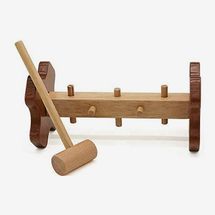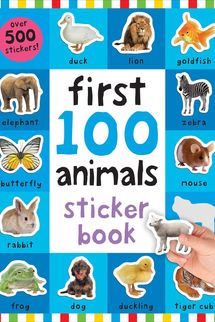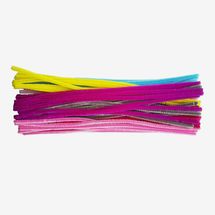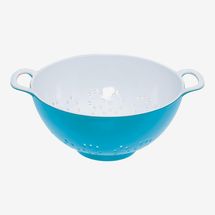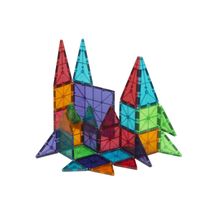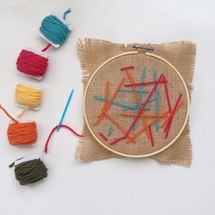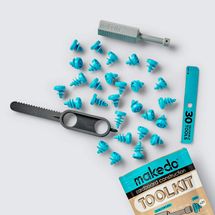
A version of this story originally appeared on the Strategist US.
Working from home without getting distracted by social media, coronavirus news updates, or that neighbor who blares EDM on loop is hard enough for anyone. Add a curious toddler or an energetic 5-year-old into the mix, and you might find writing a single coherent email to be nearly impossible. Teachers, child-development experts, and homeschool parents agree that creating some kind of daily routine will help children (and thus, their parents) feel less stressed and give everyone a sense of comfort in the midst of anxiety and uncertainty. But if all of the aspirational daily schedules floating around on social media make you feel worse about your own plan — or about the fact that you have no plan at all, other than giving your 2-year-old a pile of socks and hoping she’ll continue to delight in moving them for the next eight hours — don’t worry. There are plenty of small things you can do to keep your kids occupied while you log on to your fourth Zoom meeting of the day. We talked to experts to find the best ways to keep kids busy without resorting to yet another round of Frozen 2.
Former teacher and anti-bias educator Liz Kleinrock says that adding a bit of structure to your days, while important, doesn’t mean you have to transform your home into a classroom. Many simple and fun activities, like counting out 100 paper clips or pennies (something Kleinrock used to do with her first-graders), can help kids practice academic skills, but in a more creative and free-flowing way. (Just don’t play that game with kids young enough to try to eat the counting pieces.) Educator and homeschool mum Britt Hawthorne advises parents who are new to spend all day with their kids to take some time to observe what works for them. “Follow your family instead of making a schedule based off of somebody else’s hopes, dreams, and resources,” she says.
How to keep toddlers busy
Quiet books
Harnessing a toddler’s attention for more than a few minutes is no easy task, but according to Marie Masterson, director of quality assessment at the McCormick Center for Early Childhood Leadership and author of Let’s Talk Toddlers, activities that help develop fine motor skills will inspire concentration and extended play. Hawthorne recommends giving your child an aptly named “quiet book” and letting them explore the soft pages. “Quiet books are like gold for toddlers,” says Hawthorne, who told us she used to take them with her family to restaurants when her kids were small. Typically made of felt or quilted material, every page of a quiet book has something for a toddler’s little hands to do. They have Velcro, zippers, and buttons that help toddlers practice fine motor skills and keep them busy for a surprising amount of time. Hawthorne says you can make your own with things you have around the house, but if you’re not that crafty, we found this chef-themed quiet book from Melissa & Doug that you can add to an order of batteries and granola.
Rice-bag sensory toy
Julie O’Rourke, owner of Rudy Jude, an eco-friendly clothing label for kids and adults, has two sons, ages 4 and 18 months, and posts video tutorials of the simple and nice-enough-to-display-in-your-home crafts that she makes with them on her Instagram Stories. She has even posted videos of a Joshua Tree–themed quiet book she made out of felt. O’Rourke says she gets a lot of DMs from parents of small children looking for advice on activities to do with their kids at home. She told us about a sensory toy she made for Rui, her younger son, inspired by a toy both boys love to play with in the waiting room of their doctor’s office. O’Rourke says Rui is mesmerized by the DIY version of the toy and won’t put it down. All you need to make one of your own is a large Ziploc freezer bag, some packing tape, rice, millet, or dried beans, and a handful of tiny toys that you have been hiding from your toddler lest they try to eat them. Fill the Ziploc with rice, millet, or bean, add tiny toys, and then close your bag and tape it shut. This allows kids to discover the toys as they grab and play with the contents of the bag. “I think that’s kind of the appeal of this toy,” says O’Rourke. “It houses all of the little things that Rui is very aware of, and really wants to play with, but we always take away.” Make sure your bag is fully taped shut and that the bag itself isn’t so thin a kid could rip it or bite through it.
Pretend-play office
Masterson says you can include little kids in your new WFH schedule by giving them their own briefcase full of office supplies and asking them to “work” quietly nearby. “This is fun for children of all ages,” says Masterson. Though she notes that the items in their briefcase should match their age and safety needs. Masterson recommends markers, pads of paper, child-friendly scissors, stickers, and any other grown-up things like pencil cases, a measuring tape, or an old-school calculator.
Little lock box
Hawthorne’s son, who is 13 years old now, loved playing with a little lock box when he was a toddler. “My oldest would sit forever and try to work on these little locks,” says Hawthorne. Little lock boxes can be as simple as a box with a few locks, or can incorporate shape-sorting and color-matching like this one.
Squash-hammering activity
Giving your toddler pots and pans to bang on is a classic parent move, but Hawthorne has a less noisy idea. She recommends sitting your toddler down with a pumpkin, melon, or squash and letting them pound the vegetable to their heart’s content with a toy hammer. You can use any toy hammer you have laying around, or you can use one that comes as part of a set (like this wooden tap and roll set). Toddlers aren’t strong enough to do real harm with their hammer, so you can still make soup with your butternut squash once they’ve had their fun. She also says this works if you swap the hammer for stickers.
How to keep 3- and 4-year-olds busy
Pipe-cleaner challenge
Children who have just turned 3 years old are still considered toddlers, but as they grow, their motor skills improve and they will, little by little, become more independent. To further challenge 3 year olds’ fine motor skills, Masterson suggests making a game out of trying to stick pipe cleaners through all the holes in a colander. Masterson also encourages families to include their kids starting at age 3 in day-to-day planning. “Children have favorite activities and might surprise their parents with their enthusiasm to help plan the day,” she says.
Magna-Tiles
Masterson recommends starting your day with fine-motor-skills materials like the above lock box, pipe cleaners, or Magna-Tiles, which were also recommended by Hawthorne as an engaging toy for kids of all ages and one that most children are familiar with, as it can be found in most classrooms.
Sewing kit
Many Waldorf and Montessori classrooms incorporate sewing from a young age as another way of practicing fine motor skills. “We started sewing with Diogo at three,” says O’Rourke of her older son. She explains that if you don’t have a special kid’s needle, you can buy big large-eye needles and dull them by rubbing the tip on a rock. You’ll also want to use some sort of loose weave fabric. O’Rourke uses monk’s cloth because it’s easy to put a needle through. In addition, she suggests yarn or embroidery thread, and an embroidery hoop which will hold the fabric tightly in place. “Our babysitter taught us a cute little Waldorf-y rhyme about sewing that goes something like ‘up to the sun and down to the water,’” says O’Rourke. “It makes the whole process of sewing up and down really easy and sweet. There’s nothing cuter than watching your kid sing and sew at the same time,” she says. For 3- and 4-year-olds, this activity will need some supervision, so you may want to set them up at a table next to you while you work. As children get older, they can start sewing on buttons or sewing two pieces of fabric together. Until then, here’s a simple sewing kit with everything you need.
How to keep 5- and 6-year-olds busy
Books about animals
According to Hawthorne, 5- and 6-year-olds typically love animals, so building a stack of pop-up and nonfiction books that show real pictures from National Geographic or Usborne is a great way to hold their attention. “You could get a solid 30 minutes of them just looking at the pictures,” she says. Jacob Cohen, an elementary-school teacher in Brooklyn, recommends animal encyclopedias specifically made for children, like this one with tons of photographs to pore over.
Cardboard box constructions
Several people we talked to mentioned using the cardboard boxes you have at home from ordering food or other supplies (assuming they have been sufficiently wiped down) as the basis for creative play. Jackie Delamatre, an educator and curriculum writer, suggests getting this set of connectors, that comes with a kid-safe cardboard cutter, for building projects.
Plus a few free online resources to keep kids busy
In speaking to the above educators and parents, we’ve been incredibly inspired by the artists, authors, and even museums posting free and educational children’s content online to help parents keep their kids entertained. To name a few, children’s-book author Mo Willems is hosting daily lunchtime doodle sessions for kids; the Metropolitan Museum of Art has virtual tours and curated videos; the San Diego Zoo has live video streams of animals like penguins, apes, and koalas; Josh Gad, also known as Olaf from Frozen, is doing daily read-alouds on Twitter; collaborative learning community PenPal Schools is offering free access; GoNoodle has tons of movement and mindfulness videos to help kids get the wiggles out; and NASA has a Space Place with activities for children.
The Strategist UK is designed to surface the most useful, expert recommendations for things to buy across the vast e-commerce landscape. Read about who we are and what we do here. Our editors update links when possible, but note that deals can expire and all prices are subject to change.

